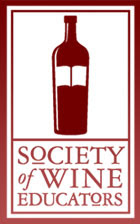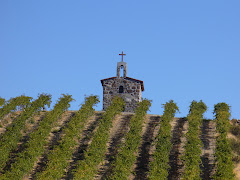 It’s great to see the critics realizing that in as crappy of economic times as these, high-priced, highly-allocated wines are meaningless to the majority of wine consumers out there. For the most part, at least from the vantage point of our little stores here in the Greater Cincinnati area, most of our trophy wine buyers are trading down, buying less (or none) of those $75-and-up Cabs and looking instead for those under-$30 (or more like under-$20) Cabs.
It’s great to see the critics realizing that in as crappy of economic times as these, high-priced, highly-allocated wines are meaningless to the majority of wine consumers out there. For the most part, at least from the vantage point of our little stores here in the Greater Cincinnati area, most of our trophy wine buyers are trading down, buying less (or none) of those $75-and-up Cabs and looking instead for those under-$30 (or more like under-$20) Cabs.What many of our consumers don’t realize is that, and maybe I am wrong here, but the majority of these more affordable wines usually don’t garner the type of press they normally gravitate toward (90-points-or-higher). Often, these great bargains are scored at an 87, 88 or 89, which by the definition of the 100-point scale, is a really good wine, but like in school, we were taught that these scores constituted a LOW B. And a lot of these affordable wines don’t even get press, because they are often dismissed by the reviewers because they’re not as prestigious as those expensive counterparts. Sure, Wine Enthusiast and Wine & Spirits are more consumer-friendly, more apt to review the inexpensive wines, but we’ve been conditioned to look for Parker and Spectator press because as far as most consumers are concerned – those two are the pinnacle of wine critique.
I’d like help in understanding how, because honestly, coming up in the restaurant business, as well as my first retail gig, press wasn’t even an afterthought. No one seemed to care about whether Parker thought this or Laube scored that. It wasn’t until I got into the Cincinnati market that I would here a customer say, “If it doesn’t score above 90 points, I am not interested.”
I would always think to myself, “Wow! Are those schmucks missing out on some good stuff!” But what can you really say to them, other than, “Okay. Let’s take a look at this 91 point wine…”
I’ll give you a few examples of some top-notch wines under $20, but with low scores or no press at all.
1. Three Saints Cabernet Sauvignon 2005. The second label for Star Lane, this beautifully-crafted Cab from the Santa Ynez Valley is everything a Cab drinker looks for: rich, concentrated fruit, good tannic grip, full-bodied flavor. 87 points in Connoisseur’s Guide, would you take a chance on this wine? We have convinced many to do so, and they’ve come back to it again and again. But as for the points hounds out there, it’s anybody’s guess.
2. Educated Guess Cabernet Sauvignon 2006. A remarkable Napa Valley Cab for under $20. Again, all a Cab drinker looks for in a Cab, especially a Napa Valley Cab, yet no press. The 2005 scored 88 points, but is that any better for the points freaks?
3. Havens Merlot 2005. I’ve always considered Havens to be THE Merlot producer in Napa. Hasn’t failed me in 10+ vintages. The press? 88 points in Wine Advocate. Are you kidding me? What is it that prevents it from cracking the 90 point barrier? Higher alcohol? More extraction of fruit? Less Merlot characteristics?
4. Hahn SLH Chardonnay 2006. A stunning Chardonnay from the Santa Lucia Highlands. Balanced, elegant, extremely well-made – nothing wrong with this one. And the press? Nada. Why when here is a beautiful effort that will please many a Chardonnay fan.
5. Honig Sauvignon Blanc 2007. The benchmark of how California Sauvignon Blanc should be done in my opinion. I’ve known Michael Honig for years, and the guys does SB right. Reminiscent of a solid white Graves, yet the scores? 87 in both Wine Spectator and Wine Advocate. Due to the inherent bias of the 100-point scale (which ranks on BIGNESS, not quality – as I have said a million times), you won’t see this one rated above 90. If it gets that 90 point score, there’s going to be some Chardonnay or Viognier blended in, making it taste like a rich white wine blend, NOT a Sauvignon Blanc.

5 wines – great wines, yet without the accolades that many people feel they need to look for. It’s sad really, because for every one wine that gets that 90 point review, there are literally dozens that score lower or not at all because the producers didn’t submit the wines, the critics passed on the wines, or who knows. Don’t rely solely on the reviews. It’s like being a baseball fan and only watching the Astros. Or being a “gourmet food fanatic” and only eating chicken.
You get the idea.
Think outside the box – there’s a whole other world out there, and it’s beyond an arbitrary numerical score.











1 comment:
The questions you ask are the whole idea behind The 89 Project (http://89project.blogspot.com). There, we try to give all the 89s a second look, all the while asking 'WHY did this get an 89?' Was it really great but missing that special something? Or is it just that a $13 wine can't possibly be 90+? Or maybe the wine is from Long Island, instead of Napa, and we all "know" that Long Island does not make 90+ wines. Right?
Post a Comment